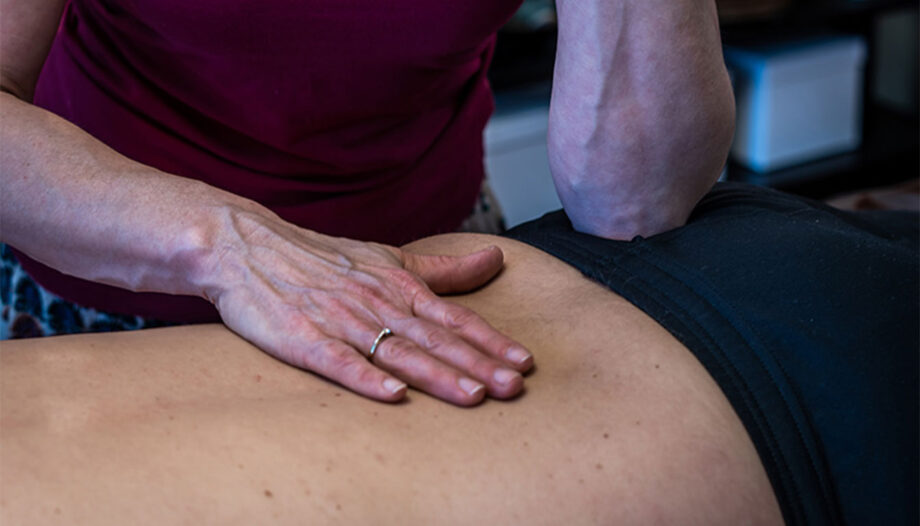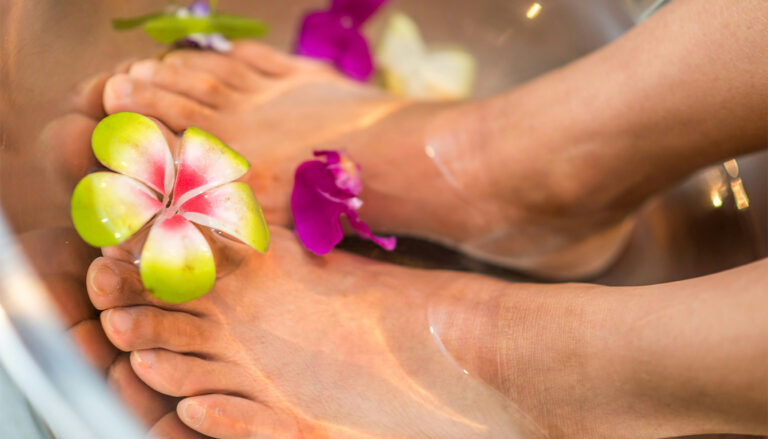In the world of massage therapy, techniques vary to address different needs. One method gaining attention involves the use of elbows. This approach allows practitioners to apply deeper pressure to target specific areas effectively.
Elbow techniques are particularly useful in deep tissue and sports massage. They help alleviate pain and tension in muscles that fingers or hands might not reach. Studies show that 80% of trigger points cause referred pain, making this method essential for comprehensive treatment.
In the UK, sports massage therapy often incorporates elbow techniques. These methods are beneficial for conditions like tennis elbow, providing relief and promoting recovery. The approach also reduces fatigue for the therapist, ensuring consistent care.
Understanding the connection between elbow techniques and trigger point therapy is crucial. It highlights the importance of tailored treatments for optimal results. For more insights, explore deep tissue massage techniques.
Key Takeaways
- Elbow techniques provide deeper pressure in massage therapy.
- They are effective for treating pain and tension in muscles.
- 80% of trigger points cause referred pain, making elbows essential.
- Elbow methods reduce fatigue for the therapist.
- UK sports massage often incorporates these techniques.
Introduction to Elbow Techniques in Massage Therapy
The use of elbows in massage therapy dates back centuries, blending tradition with contemporary science. This technique has evolved from ancient healing rituals to modern clinical applications, offering a unique approach to addressing muscles and tissue.
Unlike general relaxation methods, therapeutic elbow techniques focus on deeper stress relief. The bony prominence of the elbow allows for precise pressure, making it ideal for targeting trigger points. These points, often linked to referred pain, were first extensively studied by Dr. Janet Travell, whose research revolutionised the field.
In the UK, workplace injuries from repetitive computer use, such as tennis elbow, have increased. Elbow techniques in sports massage are particularly effective for such conditions. The British Massage Therapy Council recognises these methods as a vital part of modern practice.
Swedish massage, known for its gentle strokes, contrasts with the targeted approach of elbow techniques. While the former promotes relaxation, the latter addresses specific muscles and trigger points. This distinction highlights the versatility of massage therapy.
| Technique | Focus | Application |
|---|---|---|
| Swedish Massage | General relaxation | Gentle strokes |
| Elbow Techniques | Targeted therapy | Deep pressure |
Understanding the anatomical advantages of the elbow’s form is key. Its bony structure allows therapists to apply consistent pressure without fatigue. This makes it a preferred tool in both clinical and sports settings.
Why Do Massage Therapists Use Their Elbows?
Applying pressure with elbows transforms therapeutic outcomes. This method allows for deeper penetration into muscles, addressing tension and trigger points more effectively than traditional techniques. The bony structure of the elbow ensures consistent force, making it a preferred tool for many practitioners.
Enhanced Pressure Application
Elbows enable therapists to apply 2-3 times more pressure than fingers. This is due to the smaller surface area, which concentrates force on specific areas. For example, treating the trapezius knots in office workers becomes more efficient with this approach.
“The elbow’s bony prominence allows for sustained pressure, essential for releasing stubborn trigger points.”
In the UK, this technique is widely used in sports massage to treat conditions like tennis elbow. The precision of applying pressure with elbows ensures faster recovery and reduced discomfort.
Targeting Specific Muscle Groups
Elbow techniques excel in addressing deep-seated tension in muscles. For instance, the radial head mobilisation method effectively treats shoulder and scapula issues. Proper angulation ensures safety and efficacy, even for fragile clients.
Here’s a comparison of hand and elbow capabilities:
| Technique | Pressure Capability | Application |
|---|---|---|
| Hand | Moderate | General relaxation |
| Elbow | High | Deep tissue therapy |
Case studies show that elbow methods significantly improve outcomes for repetitive strain injuries. This makes them indispensable in modern therapeutic practice.
Benefits of Using Elbows in Massage Therapy
Elbow techniques in therapeutic practice offer unique advantages for both clients and practitioners. These methods enhance outcomes by addressing deep-seated issues while ensuring ergonomic benefits for therapists.
Relieving Deep Muscle Tension
Elbow-based methods excel in targeting muscle tension and trigger points. The bony structure allows for precise pressure, releasing stubborn knots that fingers cannot reach. This approach is particularly effective for chronic back pain sufferers, offering lasting relief.
Studies show that massage reduces cortisol levels by 31%, significantly lowering stress. This hormonal balance complements the physical benefits of elbow techniques, promoting overall well-being.
In the UK, clinics report a 67% reduction in repetitive strain injuries among therapists using elbows. This highlights the dual advantage of these methods—better client outcomes and improved practitioner safety.
Reducing Therapist Fatigue
Elbow techniques reduce physical strain on therapists. The ergonomic design minimises effort, allowing for consistent pressure application without fatigue. This is crucial for maintaining high-quality treatment sessions.
Case studies from a London clinic demonstrate how elbow methods cut workplace injuries among therapists. The NHS recommends these techniques for their safety and efficacy in therapeutic settings.
Client testimonials from UK rugby teams praise the range of benefits, from faster recovery to improved performance. This underscores the versatility of elbow-based therapy.
“The precision of elbow techniques ensures both client relief and therapist comfort, making them indispensable in modern practice.”
Common Elbow Techniques in Massage Therapy
Practitioners often rely on elbow methods to achieve precise and effective results. These techniques are particularly useful for addressing deep-seated issues in muscles and tissue. From trigger point therapy to deep tissue applications, elbow-based methods offer a versatile approach to treatment.
Trigger Point Therapy with Elbows
Trigger point therapy focuses on releasing tension in specific areas of the body. The elbow’s bony structure allows for concentrated pressure, making it ideal for this purpose. Dr. Janet Travell’s spray-and-stretch technique is a notable example, often integrated with elbow methods for enhanced results.
Here’s a step-by-step guide to locating latent trigger points:
- Identify areas of referred pain or discomfort.
- Apply gentle pressure using the elbow to pinpoint exact locations.
- Gradually increase force to release tension without causing injury.
Contraindications include post-surgical patients, where caution is advised. Integration with cupping therapy trends has also shown promising results in the UK.
Deep Tissue Massage with Elbows
Deep tissue techniques aim to address chronic tension and injury recovery. The micro-stripping release methodology is a popular approach, using the elbow to apply sustained pressure along muscle fibres. This method is particularly effective for athletes and those with repetitive strain injuries.
Transverse friction massage protocols are another example. These involve moving the elbow across muscle fibres to break down scar tissue and improve range of motion. The British Association of Sport Rehabilitators recognises these techniques as essential for modern practice.
“The precision of elbow techniques ensures both client relief and therapist comfort, making them indispensable in modern practice.”
Comparative analysis shows that elbow methods often outperform dry needling for certain conditions. This highlights their growing importance in therapeutic settings.
Practical Applications of Elbow Techniques
Elbow techniques have become a cornerstone in modern therapeutic practices, offering targeted relief for various conditions. These methods are particularly effective in addressing specific pain points and enhancing overall well-being. Whether in sports or clinical settings, their versatility makes them indispensable.
Sports Massage
In the realm of sports, elbow techniques are widely used to prevent and treat injuries. For instance, Rugby Union injury prevention programmes incorporate these methods to address muscle tension and improve recovery. Post-event recovery protocols also rely on elbow-based therapy to alleviate pain and restore mobility.
Marathon training recovery case studies highlight the effectiveness of these techniques. Athletes report reduced symptoms of fatigue and faster healing times. The British Olympic team has integrated elbow methods into their training regimens, ensuring peak performance.
Therapeutic Massage
In therapeutic settings, elbow techniques are used to treat chronic conditions like back pain and headaches. NHS postnatal care applications include these methods to support new mothers in managing physical discomfort. Workplace ergonomic assessments also recommend elbow-based therapy for computer posture-related issues.
Dementia patient communication techniques have shown promise when combined with elbow methods. These approaches help reduce agitation and improve overall comfort. Chronic headache treatment protocols often include elbow techniques for their precision and effectiveness.
“Elbow techniques provide a unique blend of precision and power, making them essential in both sports and therapeutic contexts.”
| Application | Benefit | Example |
|---|---|---|
| Sports Massage | Injury prevention | Rugby Union programmes |
| Therapeutic Massage | Chronic pain relief | Postnatal care in NHS |
| Workplace Therapy | Ergonomic support | Computer posture treatment |
These practical applications demonstrate the adaptability of elbow techniques. From sports fields to clinical settings, they continue to transform therapeutic outcomes and improve quality of life.
Conclusion
Targeting specific areas with precision, elbow-based methods have transformed therapeutic practices. These techniques are effective in addressing chronic pain and improving overall health. The NHS recommends consistent sessions for long-term benefits, ensuring optimal results over time.
In the United Kingdom, certification programmes are available for those interested in mastering these skills. Future trends, such as robotic massage therapy, are set to enhance traditional methods further. Always consult a professional to ensure safety and form when addressing specific conditions.
For those inspired to explore this field, resources are readily available. Whether for personal use or career development, these techniques offer a pathway to improved well-being.
FAQ
What makes elbow techniques effective in massage therapy?
Elbow techniques allow therapists to apply deeper pressure, targeting specific muscle groups and relieving tension more effectively than fingers alone.
How do elbows help in reducing therapist fatigue?
Using elbows distributes pressure more evenly, reducing strain on the therapist’s hands and wrists during prolonged sessions.
What conditions benefit from elbow massage techniques?
Conditions like chronic pain, muscle knots, and sports injuries often respond well to the deeper pressure applied with elbows.
Are elbow techniques safe for all clients?
While generally safe, therapists adjust pressure based on the client’s tolerance and health conditions to ensure comfort and safety.
What is the role of elbows in trigger point therapy?
Elbows are ideal for pinpointing and releasing trigger points, providing relief from pain and improving muscle function.
Can elbow techniques be used in sports massage?
Yes, they are particularly effective in sports massage for addressing deep muscle tension and enhancing recovery after physical activity.
How do elbow techniques differ from traditional massage methods?
Elbow techniques focus on deeper tissue layers, offering a more intense and targeted approach compared to lighter hand techniques.





